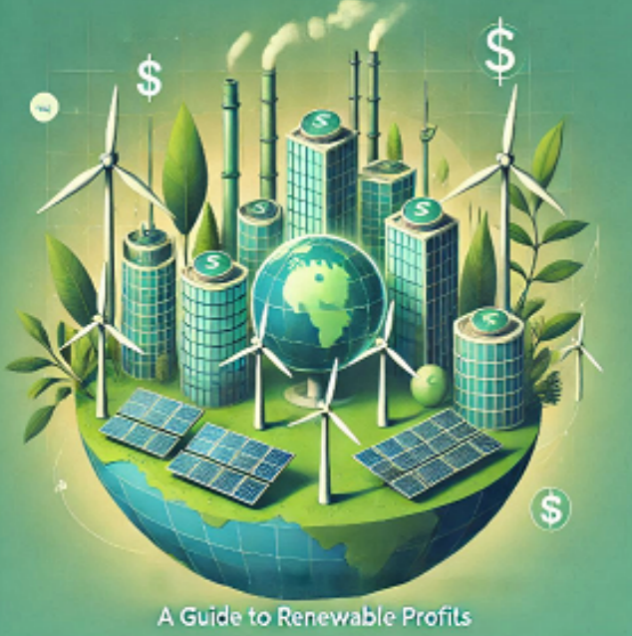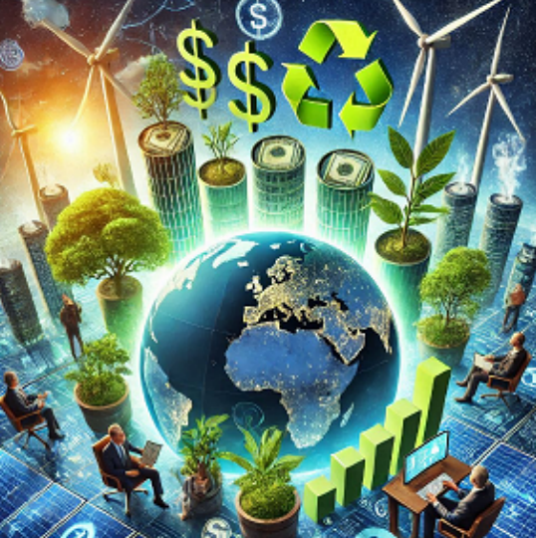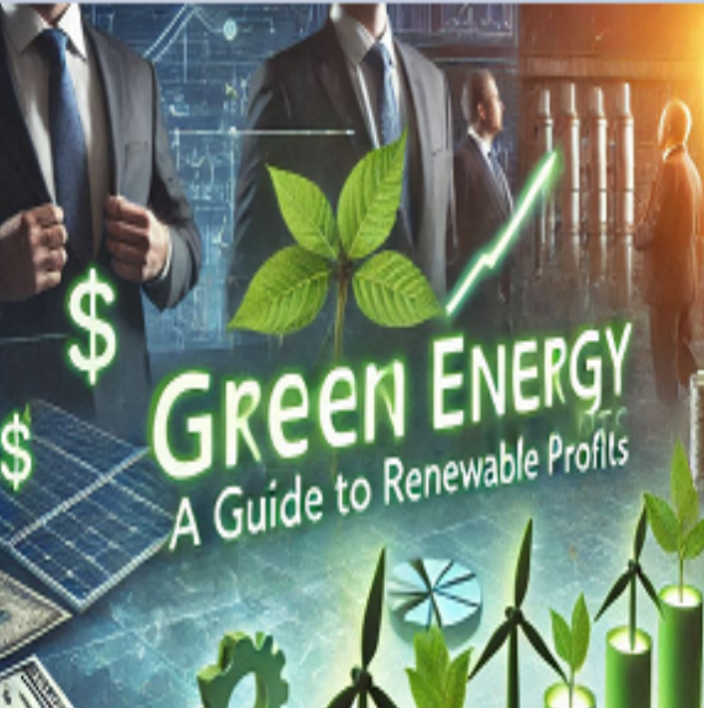Considering the growing scale of sustainable practice, there is a growing trend and activity of green energy investment. Such investment is not only possible for environmental protection but also to business efficiency. Experience of learning to work in this sector is one way in which all the potential of this sector can be brought into play.

What Are Green Energy Investments?
Investment in green energy is used to source such renewables, solar, wind, hydro and geothermal energy. Investments include stock, mutual fund, exchange listed fund (ETF) and direct investments in renewable energy projects. Renewable energy market in 2020, has been reached to $881.7 billion. It is expected to grow further to $1,977.60 billion by the end of 2030 with the growth rate of 8.4%.
Why Invest in Green Energy?
- High Growth Potential: There are global governments conspiring for a clean energy revolution. For example, in the U.S. Inflation Reduction Act 2022, $369 billion are set aside for energy security and climate. Such initiatives drive demand for green energy projects.
- Environmental Impact: Finance of renewable energy in order to reduce greenhouse gas emissions (and thus climate change). This aligns with global sustainability goals.
- Financial Returns: Many green energy companies offer strong financial performance. For instance, a market leader in renewable energy, NextEra Energy (NextEra), Achieved a 12% CAGR annual dividend growth over the previous 10 years.
Types of Green Energy Investments
- Renewable Energy Stocks: Investment to stocks, e.g., Tesla, First Solar, Vestas Wind Systems, and so on. All of the following companies are in the manufacturing or development of renewable energy technologies. The stock price of First Solar increased by 75% in 2023. It is because of the strong demand for photovoltaic panels and environmental products.
- Green Energy ETFs: Exchange-Traded Funds (ETFs) provide a bundled portfolio of relatively pure energy assets. It is probably the most liquid ETFs being the iShares Global Clean Energy ETF and Invesco Solar ETF.
- Financial Insight: iShares Global Clean Energy ETF returned 30% in 2021, which shows that it is capable of providing stable returns to investors who are looking for clean energy investments with a stable and consistent growth.
- Direct Project Investments: Solar farms and wind turbines have driven the manufacturing of renewable energy. This approach normally works on a large initial commitment, yet yields continuous benefit through energy generation.
- Government Bonds: The governments are issuing green bonds for the provision of renewable wind power technologies. They are low-risk and ideal for conservative investors.

How to Start Investing in Green Energy?
- Research the Market: Pinpoint the trends and technologies driving the green energy market. With a focus on locations suitable to implement policy and high levels of penetration of renewables.
- Assess Financial Goals: Identify your investment goals specially if you are looking for long-term growth or short-term gains? This will guide your choice of assets.
- Diversify Investments: Expand portfolio investments in alternative renewable energy resources and financial products. Diversification reduces risk and enhances returns.
- Monitor Performance: Regularly review the performance of your investments. Financial indicators (e.g., return on investment (ROI), dividend yield, market growth) for the solution can be used to reach the best solution.
Risks of Green Energy Investments
- Market Volatility: Renewable energy stocks and ETFs may be volatile in price due to government policy changes or market perception. In 2022, wind energy stocks temporarily declined when subsidies were postponed in Europe.
- High Initial Costs: Direct investments in projects require substantial capital. However, long-term returns often justify the expense.
- Technological Challenges: Renewable energy technologies evolve rapidly. Investments in obsolescent or inefficient solutions can cause damages.
Strategies for Maximizing Returns
- Stay Updated: Keep an eye on the news of the industry and the government policies, in order to discover the new opportunities. For example, stock prices of companies potentially involved in PV systems might be influenced by tax incentives for installing solar panels.
- Choose Reliable Companies: Companies with track records of profitability and innovation should be prioritized. Avoid startups with untested technologies.
- Reinvest Earnings: Financial return/profit due to investment in green energy assets to garner more shares or new projects. This compound growth strategy accelerates wealth accumulation. As Morningstar research indicates, reincorporation of dividends also adds an additional 25% to the 10-year total return.
The Future of Green Energy Investments
According to the International Energy Agency (IEA) renewables are forecast to provide 90% of global growth in electricity by 2030. Solar and wind power h. are at the root of this expansion, presenting immense although largely unmined opportunities for investors.
- Emerging Trends: Hydrogen energy and battery storage technologies are emerging. Offshore wind farms are also growing very fast, especially in Europe and Asia. Carbon credit trading is becoming a lucrative market.
- Outlook: Ecological investments in an ecological, contingent, mix of ecological, economic and social consequences(s) are rare. Through market intelligence, asset diversification and continuous learning and development you will be well positioned to take advantage of this growing sector. For an investor/aspiring investor, the renewable energy sector presents a solid opportunity to build long-term wealth.


Beyond the Glass Ceiling: Strategic Wealth Management for Affluent Women

Simple Ways to Cut Unnecessary Expenses

Elevate Your Lifestyle Through Smart Wealth Management

Hotspots or Hype? Investing Beyond Emotion

NFT Getting Started Tutorial Open the "Treasure Map" of the Digital Wealth World

Investment Insights from Blockchain Data: Reading Digital Footprints

Insurance Wisdom: Avoiding Pitfalls
